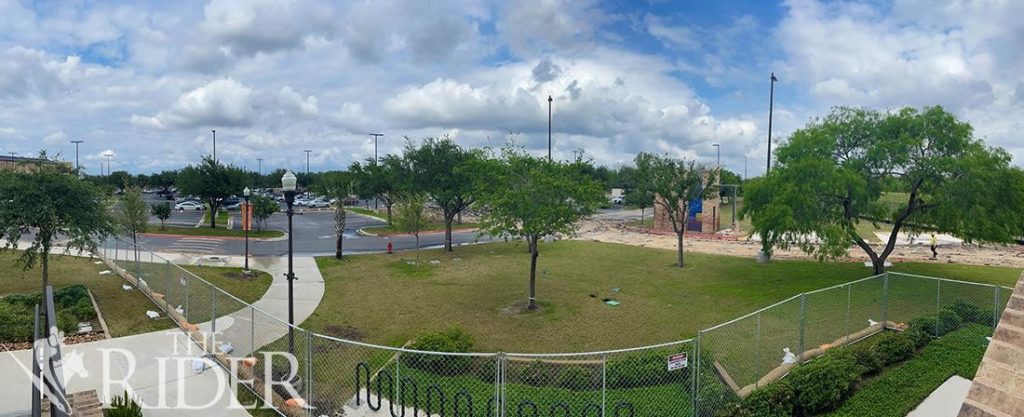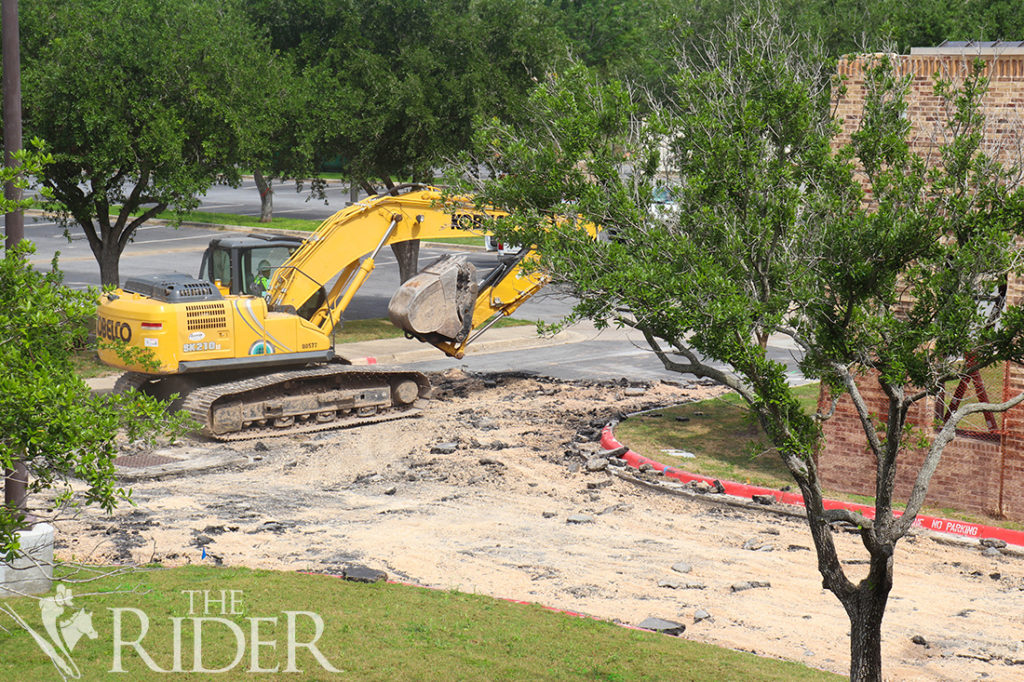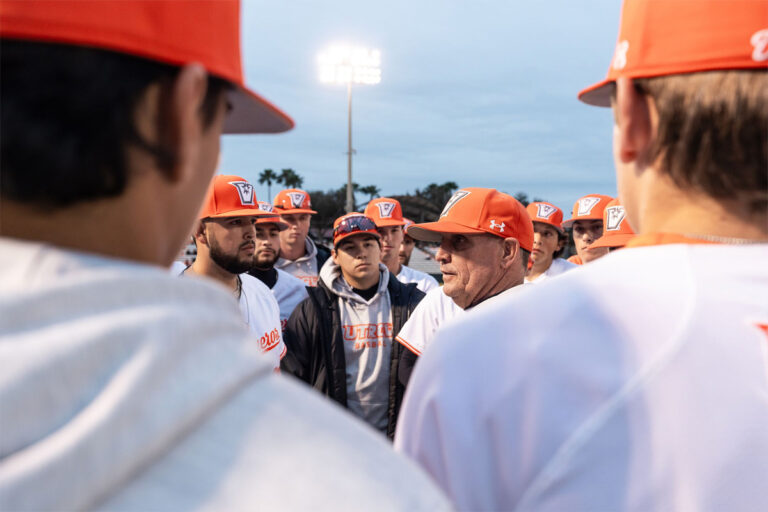
Expansion of the Interdisciplinary Academic Building on the Brownsville campus is underway to create space for new state-of-the-art classrooms, research labs and faculty offices for the Department of Health and Human Performance. The expansion will reduce the amount of space UTRGV leases from Texas Southmost College and is anticipated to be completed in June 2023. About 70 parking spaces will be lost in Lot B-1 due to this expansion. Roxanna Miranda/The Rider Photos
The expansion of the Interdisciplinary Academic Building in Brownsville began April 11 and is anticipated to be completed in June 2023. The 16,754-square-foot building will house the Department of Health and Human Performance.
Gerry Rodriguez, UTRGV director of Facilities Planning & Construction, said the expanded building will offer new state-of-the-art classrooms and teaching spaces.
“We currently don’t have [that] in Brownsville because they’re being housed in leased spaces that we’re leasing from Texas Southmost College,” Rodriguez said. “It’s not ideal space. Since we’re leasing it, we can’t modify it to our needs. And in this new construction, we’ll be able to build the space. It was designed specifically for the HH&P instruction and research.”
In an email sent to The Rider on April 19, he wrote, “Some departments other than HH&P will remain in [TSC’s] Cortez [Hall], but the amount of leased space will be reduced.”
UTRGV is currently leasing 10 buildings from TSC.
The total cost of the BINAB expansion is $11,706,456, Marta Salinas-Hovar, associate vice president for Facilities Planning & Operations, told The Rider in an email last Thursday.
Salinas-Hovar said the expansion of the building was funded by $2,786,456 in Tuition Revenue Bonds and $8,920,000 from the Revenue Financing System.
TRBs are paid back from tuition charges levied against students or institutions, according to the Texas Senate website. The Revenue Financing System is a cost-effective debt program secured by a systemwide pledge of all legally available revenues for debt, according to the University of Texas System website.
Rodriguez also wrote in the email that the name of the building will be the same as the original but it will be Building B.

Roxanna Miranda/The Rider Photos
The new space will house classes related to health and human performance, research and faculty offices, he said.
About 70 parking spaces will be lost in Lot B-1, according to Rodriguez.
“The direction that the building is growing does require that we move a drive, an existing drive that’s adjacent to the parking lot,” he said. “So when we move the drive over, it will cut into some of the existing parking.”
Rodriguez said the university will not be replacing the lost parking spots since additional parking is available in Lot B-4, which is located across the street from the Casa Bella student housing complex.
Biology senior Clarissa Barrera said she likes to see that the campus is growing.
“I just don’t like that it’s right now during the semester,” Barrera said. “It’s less parking. Imagine having to walk all the way from [Lot B-4]. … It’s just more time for me that I have to get up earlier and find a parking spot.”
Biology junior Alejandra Mata said the new building can add a variety of classes and bring in new professors.
“You know how every building has their own specific need,” Mata said. “They’re definitely adding more things for those students [in the Department of Health and Human Performance].”
She added that because of the elimination of parking spaces, the university should add more Zone 2 areas for students.
Zone 2 parking lots are located closer to the buildings than Zone 1 spaces.
Barrera also suggested that more Luke pay station spots in Lot B-1 be added.
“Like, if I really have one class the entire week, I’m not going to want to pay $100 [per year] to come,” she said. “I’d rather just pay, you know, like, per hour. But then again, it’s like, you don’t know if there’s going to be parking because there’s only, like, 10 spots.”





